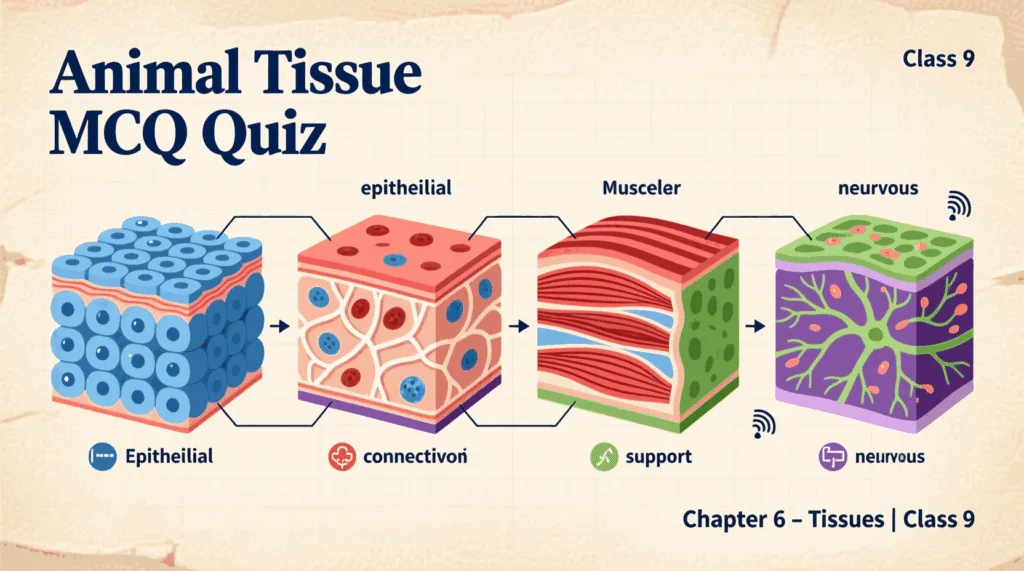Motion Assertion and Reason Questions Class 9
Table of Contents
Perception of Motion and Reference Point
- Assertion (A): For passengers in a moving bus, the roadside trees appear to be moving backwards. Reason (R): A person standing on the roadside perceives the bus along with the passengers as moving.
- Answer & Explanation: Both A and R are true, but R is not the correct explanation of A. The assertion (A) is true because the perception of motion is relative to a reference point. For passengers in the bus, the bus itself is their immediate frame of reference, and relative to it, the external objects (trees) appear to move backwards. The reason (R) is also true, as an external observer would see the bus and its occupants moving. However, R does not explain why the trees appear to move backwards to the passengers; it simply describes another perspective of motion. The explanation for A lies in the relative nature of observation.
- Assertion (A): We often perceive an object to be in motion when its position changes with time. Reason (R): To describe the position of an object, we need to specify a reference point called the origin.
- Answer & Explanation: Both A and R are true, and R is the correct explanation of A. The assertion defines the basic perception of motion based on a change in position. The reason explains the fundamental requirement for defining position or motion: the need for a reference point or origin. Without a reference point, “change in position” would be ambiguous, thus the concept of a reference point is crucial to perceiving and describing motion.
Distance and Displacement
- Assertion (A): The magnitude of displacement can be zero even if the distance covered is not zero. Reason (R): Displacement is defined as the shortest distance measured from the initial to the final position of an object.
- Answer & Explanation: Both A and R are true, and R is the correct explanation of A. The assertion is true; for example, if an object travels from point O to point A and then returns to point O, the distance covered is OA + AO (e.g., 60 km + 60 km = 120 km), but its displacement is zero because its final position coincides with its initial position. The reason correctly defines displacement, highlighting that it only considers the start and end points, not the path taken. This definition explains why displacement can be zero even when a path has been traversed.
- Assertion (A): To describe distance, only its numerical value (magnitude) needs to be specified. Reason (R): Distance is a vector quantity that requires both magnitude and direction for its description.
- Answer & Explanation: A is true, but R is false. The assertion correctly states that distance is described solely by its numerical value, also known as its magnitude. However, the reason is incorrect. Distance is a scalar quantity, meaning it only has magnitude and does not require direction. Quantities that require both magnitude and direction are called vector quantities.
Uniform and Non-Uniform Motion
- Assertion (A): When a person is jogging in a park, their motion is typically an instance of non-uniform motion. Reason (R): In non-uniform motion, objects cover unequal distances in equal intervals of time.
- Answer & Explanation: Both A and R are true, and R is the correct explanation of A. A person jogging in a park is likely to vary their speed, perhaps slowing down, speeding up, or changing direction. This means they would cover unequal distances in equal time intervals, which directly matches the definition of non-uniform motion given in the reason.
- Assertion (A): For an object in uniform motion along a straight line, its velocity remains constant with time. Reason (R): In uniform motion, the object covers equal distances in equal intervals of time.
- Answer & Explanation: Both A and R are true, and R is the correct explanation of A. In uniform motion, by definition, an object covers equal distances in equal time intervals. If this motion is along a straight line, it implies that both the speed and direction are constant, which means the velocity is constant. Therefore, R provides the basis for A’s truth.
Speed and Velocity
- Assertion (A): The average speed of a car can be 50 km h–1, even if it didn’t travel at 50 km h–1 all the time. Reason (R): Average speed is calculated by dividing the total distance travelled by the total time taken.
- Answer & Explanation: Both A and R are true, and R is the correct explanation of A. The assertion is true; average speed accounts for the entire journey and does not imply constant speed throughout. The reason provides the formula for average speed, which inherently allows for variations in instantaneous speed during the trip.
- Assertion (A): An object moving with a constant speed can have a changing velocity. Reason (R): Velocity specifies both the speed and the direction of motion.
- Answer & Explanation: Both A and R are true, and R is the correct explanation of A. The assertion is true, especially in cases like uniform circular motion where the speed is constant, but the direction of motion is continuously changing, thus changing the velocity. The reason explains why this is possible: velocity is a vector quantity that depends on both magnitude (speed) and direction. A change in either one (even if the other is constant) results in a change in velocity.
Acceleration
- Assertion (A): The SI unit of acceleration is m s–2. Reason (R): Acceleration is defined as the change in velocity per unit time.
- Answer & Explanation: Both A and R are true, and R is the correct explanation of A. The assertion correctly states the SI unit for acceleration. The reason provides the definition of acceleration: acceleration = change in velocity / time taken. Since velocity is measured in m s–1 and time in s, the unit becomes (m s–1) / s = m s–2, thus the reason supports the assertion.
- Assertion (A): A car travelling along a straight road is said to be moving with non-uniform acceleration if its speed increases by unequal amounts in equal intervals of time. Reason (R): Uniform acceleration occurs when velocity changes by equal amounts in equal intervals of time.
- Answer & Explanation: Both A and R are true, and R is the correct explanation of A (by contrast). The assertion describes non-uniform acceleration, where the velocity (or speed in this straight-line example) changes at a non-uniform rate. The reason defines uniform acceleration, where changes in velocity are equal over equal time intervals. By understanding the definition of uniform acceleration, it becomes clear why unequal changes in speed/velocity constitute non-uniform acceleration.
Graphical Representation of Motion
- Assertion (A): A distance-time graph for an object moving with uniform speed is a straight line. Reason (R): For uniform speed, the distance travelled by the object is directly proportional to the time taken.
- Answer & Explanation: Both A and R are true, and R is the correct explanation of A. The assertion describes the characteristic appearance of a distance-time graph for uniform motion. The reason provides the underlying principle: when an object moves with uniform speed, it covers equal distances in equal time intervals, which implies a direct proportionality between distance and time. This direct proportionality, when plotted, always results in a straight line.
- Assertion (A): The area enclosed by a velocity-time graph and the time axis gives the magnitude of the displacement. Reason (R): The velocity-time graph for uniform velocity is a straight line parallel to the x-axis (time axis).
- Answer & Explanation: Both A and R are true, but R is not the correct explanation of A. The assertion correctly states that the area under a velocity-time graph represents displacement. The reason correctly describes the shape of a velocity-time graph for uniform velocity. While both statements are true facts as per your NCERT book , the shape of the graph (R) does not explain why the area represents displacement (A). The area represents displacement because velocity multiplied by time equals displacement (s = v × t), and graphical area calculations for rectangles (velocity × time) or other shapes similarly derive this product.
Uniform Circular Motion
- Assertion (A): The motion of a stone tied to a thread and whirled in a circular path at constant speed is an example of accelerated motion. Reason (R): Even with constant speed, the direction of the stone’s motion changes at every point along the circular path.
- Answer & Explanation: Both A and R are true, and R is the correct explanation of A. The assertion is true: uniform circular motion is a form of accelerated motion. The reason accurately explains why: acceleration is the rate of change of velocity, and velocity includes both speed and direction. Even if the speed is constant, the continuous change in direction means the velocity is changing, hence there is acceleration.
- Assertion (A): If an athlete runs along a rectangular track, they have to change their direction of motion four times to complete one round. Reason (R): As the number of sides of a polygonal track increases indefinitely, its shape approaches that of a circle.
- Answer & Explanation: Both A and R are true, but R is not the correct explanation of A. The assertion is true, as a rectangular track has four corners where the athlete must change direction. The reason is also true, explaining the relationship between polygons and circles. However, the reason does not explain why an athlete changes direction four times on a rectangular track; it’s a separate concept discussed in the context of approximating circular motion.
.




